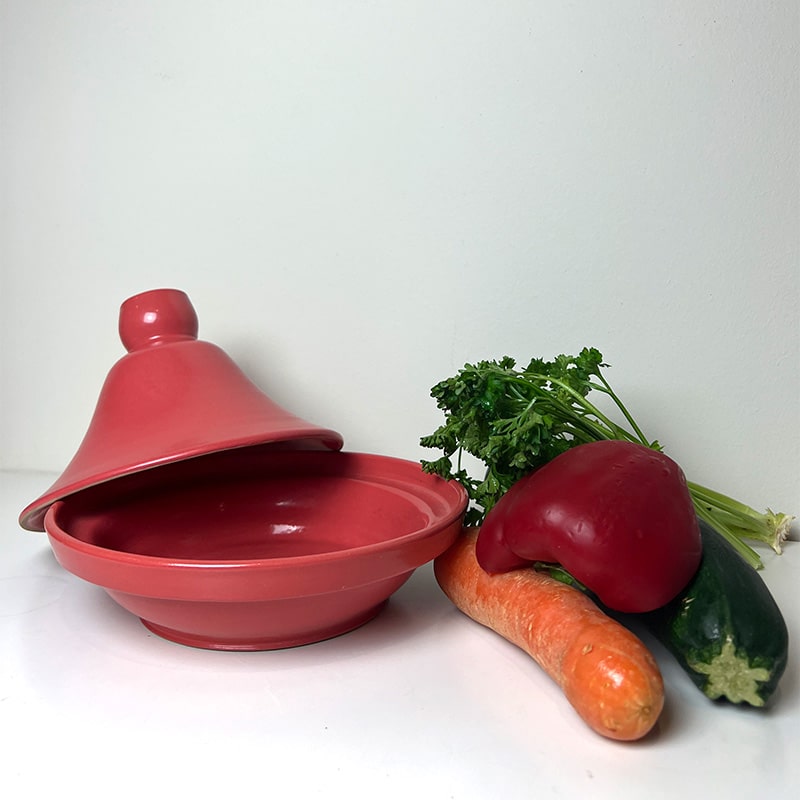What is a Tagine?
Tagine is one of the best I know. Tagine dishes are great to serve in, and you can simply make some of the most delicious dishes in them. The meat becomes completely tender as the tagine retains the juice.
But where does the tagine come from? What is its history? And how does it work? In this blog post, you will find information about exactly this, and you will also find a recipe for a tagine from the 13th century.
Tagine or Tajine means "low clay pot" in Arabic and is the name of a traditional North African dish, which exists in as many versions as we have versions of smørrebrød in Denmark, if not more. The same name is also used for the actual dish in which the dish is prepared. This dish is round with a cone-shaped lid that has a hole in the top.
In this, various simmering dishes are made, which often contain meat, fish or poultry as well as various vegetables, dried fruits and nuts. All helped well on the way with hot aromatic spices, e.g. the spice branding ras el hanout. See how you can easily make your own ras el hanout.
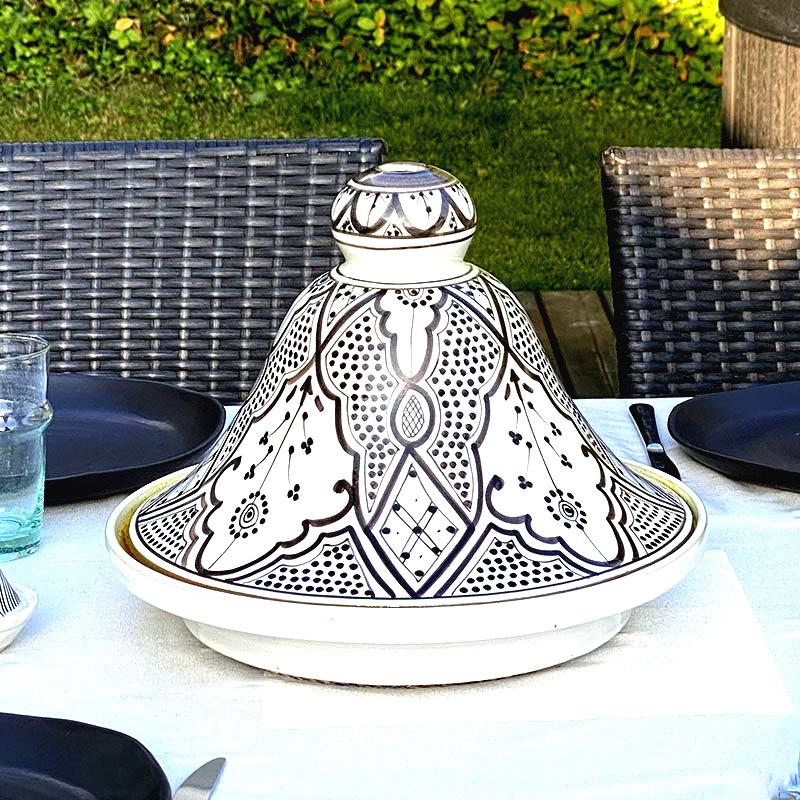
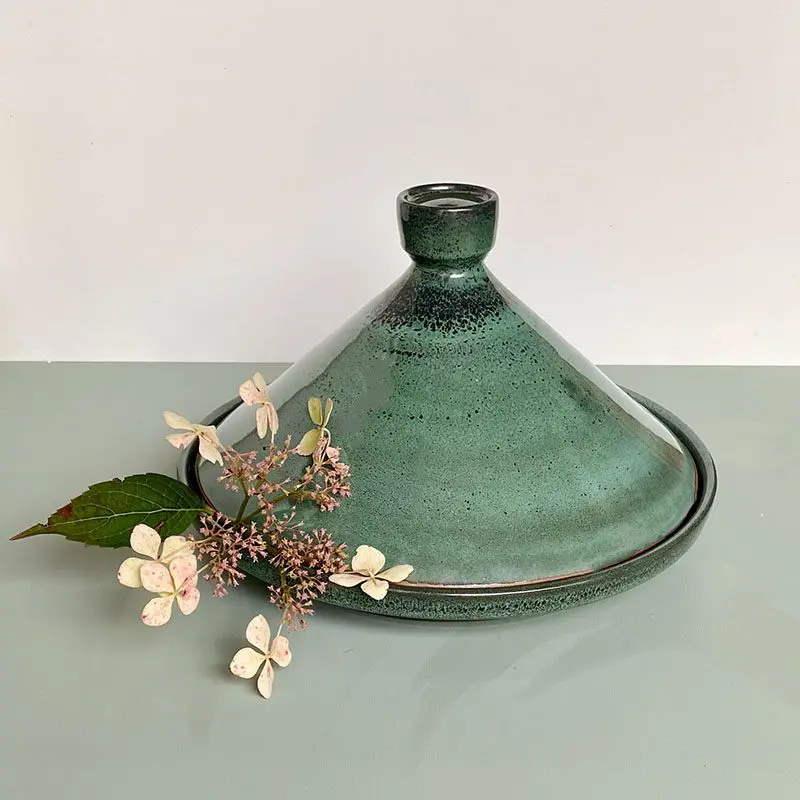
How does it work?
A tagine works a bit like a frying pan, but the big difference is the cone-shaped lid with the small hole at the top. The lid causes the steam to collect at the top, which condenses and turns into droplets, which fall back onto the dish. This helps preserve the flavor, but it also allows you to cook meat, even the cheap cuts, to absolute tenderness using very little water. This method has been essential in areas with very few water resources
The origin of the tagine
Some historians believe that the tagine originated with the North African Berber tribes, while others theorize that the Romans invented the tagine. However, the oldest written evidence dates back to the Abbasid Caliphate (750–1517), which covered most of the Middle East, eventually also North Africa. It is therefore likely that the Abbasid caliphate brought the tagine with it during its expansion to North Africa, where the tagine is today most used (Morocco, Tunisia, Algeria and Egypt).
Make a historical Tagine
The oldest written account of preparing food in this way comes from The Thousand and One Nights. A collection of oral stories from Arabia, written down in the 8th century.
One of the oldest recipes we know comes from Ibn al-Adim, an Arab scholar who lived from 1192-1262. He writes:
- Boil the meat and fry it with fresh coriander, onion, a bit of garlic and hot/strong spices.
- Cut your fennel hearts in half and place on top of the meat.
- Pour some of your broth/stock onto the dish (I'm assuming it's from cooking the meat) – and add the lamb's tails.
- Cook until the dish is cooked and the stock has been absorbed.
- Remove the tagine from the heat
A recipe from the 13th century. It doesn't get much more authentic, does it? I assume that it is sheep/lamb meat, as sheep's tails must also be used. You can optionally refrain from boiling the meat, but fry it in the pan instead, and then use a different broth. If you're not too into pigtails, you can also leave this out.
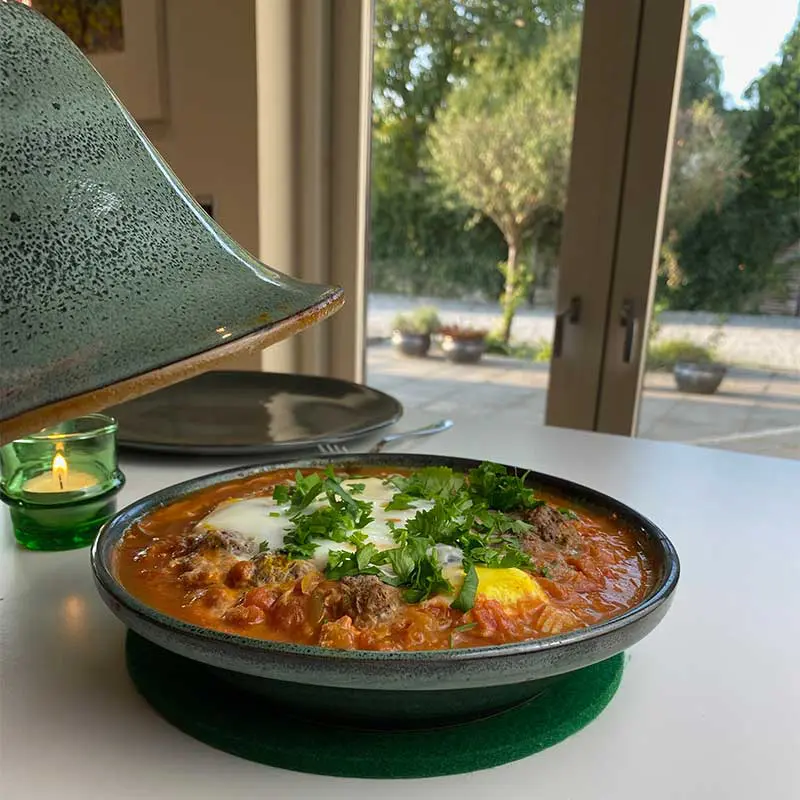
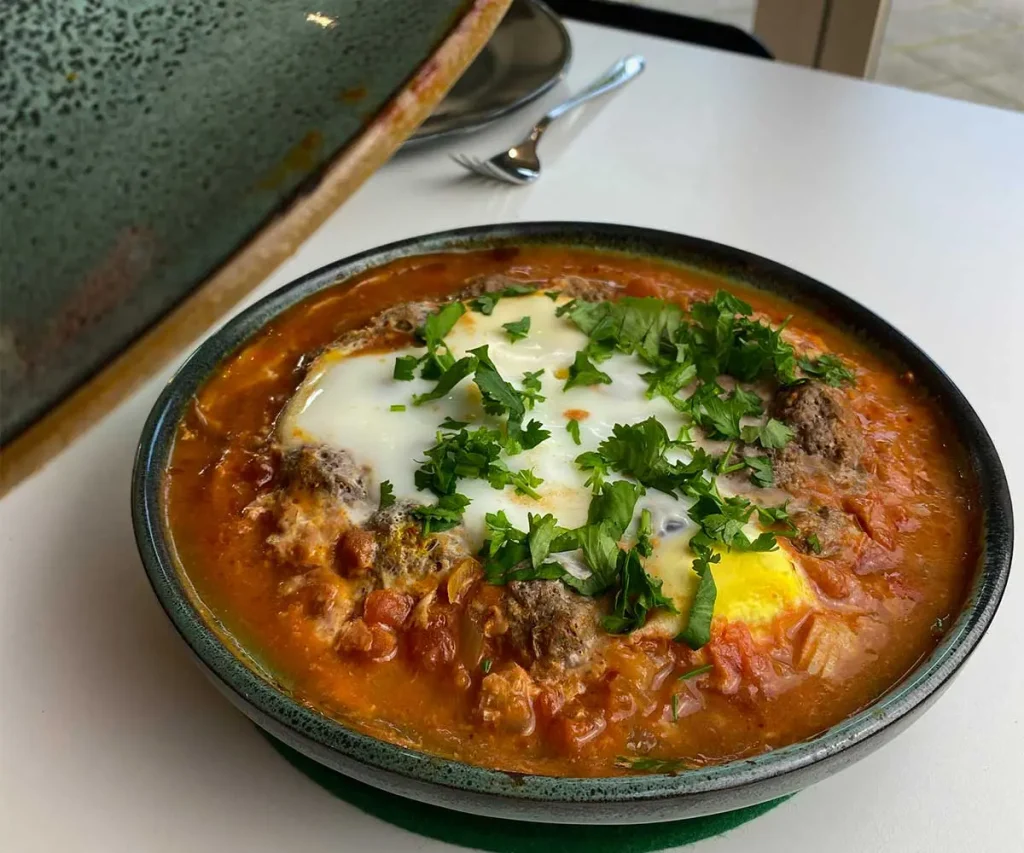
Moroccan tagines
In Morocco and Algeria, tagine is often made with sliced meat, poultry or fish along with vegetables or fruit. Often with nuts and dried fruit. The most commonly used spices are ginger, turmeric, cumin, cinnamon, saffron, paprika and chili.
In the Moroccan and Algerian tagines, it is popular to combine the spicy with the sweet. That is why tagine with lamb, prunes and spices is a very popular dish. See the recipe for my version of this traditional Moroccan concoction here. In my version, I used veal, prunes and grilled almonds.
There are a multitude of different tagines and they vary locally and even from family to family. Out by the coasts they use more fish, and up in the mountains they use more lamb and sheep. The possibilities are many, and in principle you can use what you like and want.
You can use the recipes in my blog as inspiration or make them according to the recipe. click here for recipes for tagine. For example, try the recipe with chicken, lemon and olives (click here for recipe), a tagine with meatballs in spicy tomato sauce (click here for recipe) or this delicious tagine with artichokes, peas and optional meat (click here for recipe).
If you don't have a tagine, you can use a frying pan. But if you want to have the completely authentic experience, I recommend that you get a tagine. See our selection of tagines here.

